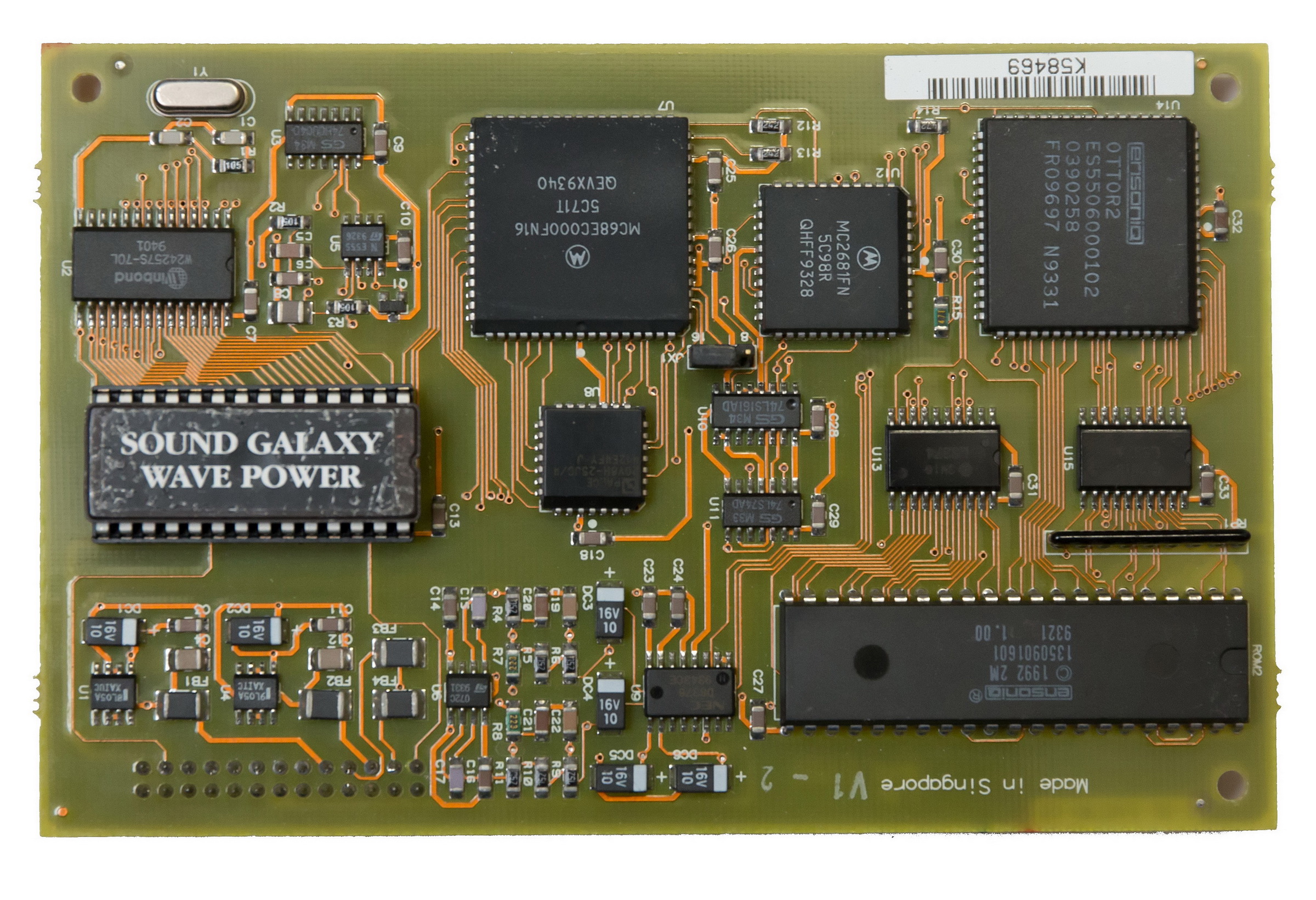Aztech Sound Galaxy WavePower
In 1993, Aztech released a General MIDI-compatible daugtherboard called the WavePower.
|
Released | 1993 |
| Bus | Creative Wave Blaster | |
| Chipset | Ensoniq OTTO | |
| Standards | General MIDI | |
| Memory | 2 MB ROM (4 MB samples compressed into 2 MB) | |
| FCC ID(s) | - | |
| Price | $199, later $129 | |
| See Also | Sound Galaxy NX Pro 16 |
The Sound Galaxy Wave Power was based on the Ensoniq OTTO chip which was used by Ensoniq themselves on the VIVO 90 sound card.
From Rich Heimlich back in 1995: "It's a decent Creative Wave Blaster clone but doesn't sound as good as one. Used to be the only other choice. Thankfully that's long ago now.". He rated the music quality at a poor 3.5 out of 10.
General MIDI Compatibility
-
Complies to General MIDI specifications for compatibility with a wide range of MIDI music synthesizers and keyboards
Support 16 MIDI Channels and 32-Note Polyphony
-
Fully supports 16 MIDI channels and 32-note polyphony for realistic reproduction of any music composition. It creates a depth as rich as any live symphonic orchestra
Contains 4MB Waveforms in 2MB ROM
-
The WavePower brings you 4MB of high digitally sampled sounds. Stored in ROM for instant access, creating music on your PC has never been easier.
Package Includes
-
Sound Galaxy WavePower add-on board
-
Midisoft Studio for Windows
-
Manual
System Requirement
-
IBM PC-AT or compatible
-
640KB RAM
-
MS DOS 3.3 or higher
-
Windows 3.1 or higher
-
EGA or VGA Display
-
Sound Galaxy PRO 16 series sound cards or Sound Blaster 16-bit series sound cards
Board Revisions
Just one board revision is known: v1.2.
Competition
In 1993 there were very few wavetable daughterboards to choose from, so the WavePower was probably a very cost-effective option compared to Creative's Wave Blaster - it's only real competition unless you could afford an external MIDI synthesizer such as the Roland SC-55 or Yamaha MU80.
In the Media
We found the Wave Power to be a fine substitute product for the Wave Blaster, however, we noted that it did not possess the same richness of sound that its cousin, the prototype Soundscape from Ensoniq, had.
The documentation for this product along with the full implementation of Midisoft's sequencer and its low price make this a good choice for one whose wave table synthesis needs require a daughter card."
Computer Gaming World, October 1993
Setting it Up
As with all GM daughterboards, there's no configuration required to install and use a MIDI daughterboard like this. If your sound card has an onboard wavetable as well, you may need to run its configuration utility to disable the onboard MIDI - this will redirect MIDI instructions to the Wave Blaster header.
Downloads
Operation Manual Get in touch if you can provide this missing item! |
|
|
